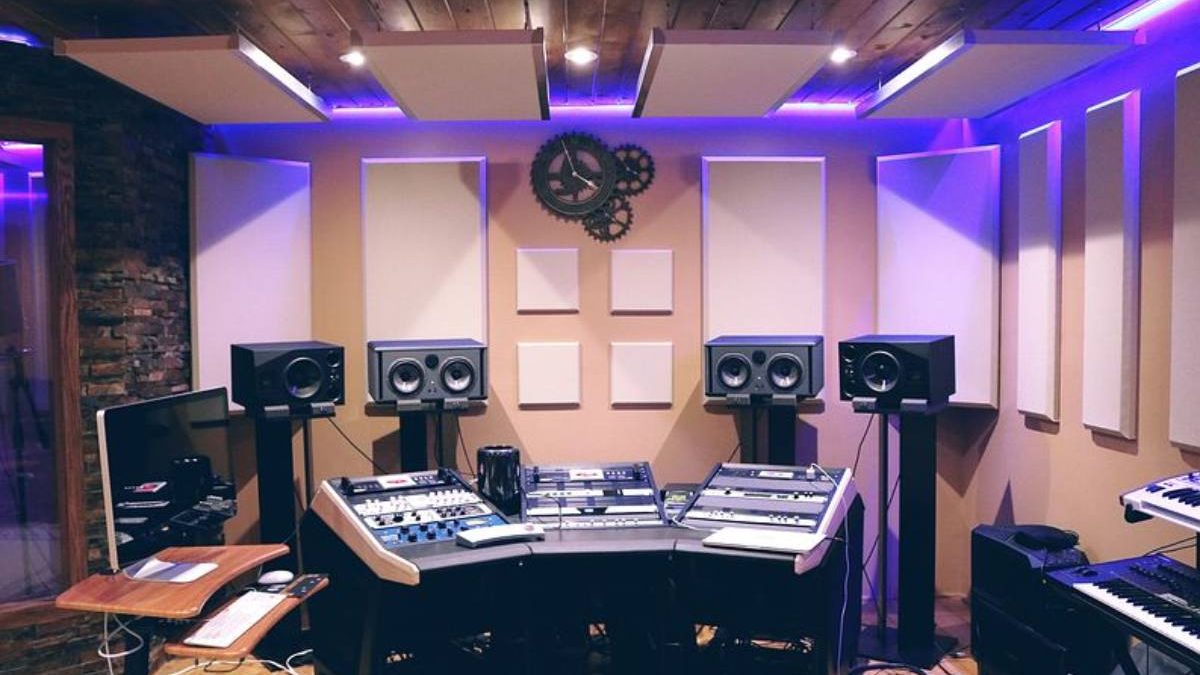Are you searching for a voice amplifier for your school, business, or other organisation? Knowing which features to prioritise is essential when deciding with so many amplifiers.
This article will discuss the most important characteristics of a good voice amplifier. Invest the time to familiarise yourself with these crucial features and how they affect the amplifier’s performance. You can find an amplifier that delivers the clear, undistorted sound you need.
Table of Contents
What Makes A Good Amplifier:
Here’s how to identify a good amplifier for your needs:
Sound Quality:
Look for amplifiers that produce clear, high-quality sound with minimal distortion. Amplifiers with noise cancellation or echo reduction functions can be especially useful in busy settings.
Power Output:
The power output of an amplifier is an important consideration. A higher wattage indicates a louder output from the amplifier. If you want to use the amplifier in a large room like an auditorium, you’ll need one with a higher wattage output.
Battery Life:
It is crucial to check the amplifier’s battery life. You don’t want your amplifier to run out of battery during a presentation or event. Look for amplifiers with long battery life, and consider having spare batteries on hand. Check out these high-quality TechXpress Voice Amplifiers.
Other Factors to Consider:
Before purchasing a voice amplifier for your school or business, it is essential to consider the following factors:
Important specifications:
Cross Talk:
Crosstalk occurs when the signals from two or more channels interfere. To avoid crosstalk, you should look for a voice amplifier with a low rating. This indicates that the amplifier can successfully separate the audio signals in each channel.
Dynamic Headroom:
Dynamic headroom is the amount of power an amplifier can deliver beyond its rated power output, which is vital for handling sudden peaks in volume. Choosing a voice amplifier with high dynamic headroom can help ensure that your audio signals are clean, clear, and free from distortion, even when there are sudden changes in volume.
Total Harmonic Distortion(THD):
Total Harmonic Distortion quantifies the degree to which an amplification system distorts an input signal. THD is expressed as a percentage and represents the harmonic distortion introduced into the signal relative to the original signal. Lower THD values indicate less distortion and higher fidelity of the audio signal.
Amplifiers fall into a few broad categories based on their construction and intended function. The amplifier’s “class” determines these categories, which describes the amplifier’s underlying circuit design. The primary types are:
Class A Amplifiers:
Although class A amplifiers are widely regarded as having the best sound quality, they are also among the least efficient models. They use a single transistor or tube to amplify the audio signal and provide a clean, pure audio signal with low distortion.
Class B Amplifiers:
Class B amplifiers use a pair of transistors or tubes to amplify the audio signal. Each transistor or tube handles half of the audio waveform, resulting in higher efficiency than Class A amplifiers. However, Class B amplifiers can introduce some distortion at the crossover point where one transistor or tube switches off and the other switches on.
Class AB Amplifiers:
Class AB amplifiers are a hybrid design that takes the best parts of Class A and Class B amps. They use a single transistor or tube and a pair of transistors or tubes to amplify the audio signal.
The single transistor or tube handles the low-level audio signal, while the pair of transistors or tubes handle the higher-level signals. Class AB amplifiers balance efficiency and audio performance with relatively low distortion levels.
Class D Amplifiers:
Class D amplifiers generate a pulse-width modulated (PWM) signal by rapidly switching the amplifier on and off with a switching circuit. These amplifiers are highly efficient and produce very little heat. However, they can introduce higher levels of distortion than other amplifiers.
Class G and Class H Amplifiers:
Class G and Class H amplifiers are variations of Class AB amplifiers that use multiple power supply rails to increase efficiency. Class G switches between two power supply voltages, while Class H uses a variable voltage to match the audio signal. These amplifiers offer higher efficiency than traditional Class AB amplifiers while maintaining good audio performance.
Intended Use:
Will you use your voice amplifier for public speaking, presentations, or outdoor events? Knowing your intended use for the amplifier is crucial in making the right purchase.
Audience Size:
The size of your audience is another critical consideration. A low-wattage amplifier will suffice for a small audience. You’ll need a higher-wattage amplifier to address a sizable crowd.
Type of Amplifier:
An amplifier can either be hardwired into a system or operate wirelessly. A wired amplifier can only be used with a microphone through a corded connection to a power source, while a wireless amplifier runs on batteries and doesn’t need a mic cable.
Wireless amplifiers are more practical and can be used in various settings, but wired amplifiers offer more power and are best for larger events.
Portability:
Consider a smaller, more lightweight model if you plan to move it around frequently. However, a larger amplifier with more power may be better if it remains in one location.
Compatibility:
Is the amplifier compatible with other equipment you may be using, such as microphones or sound systems? Pay attention to the following:
Speaker sensitivity
Speaker sensitivity measures how efficiently a speaker converts power into sound. When subjected to a given amount of energy, a speaker’s sensitivity is the sound pressure level produced when subjected to a given amount of energy and measured in decibels.
Speaker sensitivity is essential when choosing an amplifier to pair with a speaker. If the output of the amplifier is not proportional to the speaker’s sensitivity rating, the volume may be too low or inaudible.
Speakers with higher sensitivity ratings are typically more suitable for low-power output applications, such as voice amplification or portable audio systems. Conversely, speakers with lower sensitivity ratings are better suited for high-power output applications, such as concerts or large venues.
Inputs & Connections:
The types and number of inputs and connections available on an amplifier can significantly impact its versatility and functionality. Here are some of the critical inputs and connections:
- Microphone Input:
- Auxiliary Input:
- Line Output:
- USB Port:
- Bluetooth Connectivity:
- Power Input:
Budget:
Voice amplifiers can range in price from a few hundred dollars to several thousand dollars. Consider your financial constraints and then search for an amplifier that meets your needs while staying within those constraints.
Durability:
Consider the durability of the amplifier. Will it be used frequently? Will it be transported frequently? If so, invest in a more durable model that can withstand wear and tear.
Warranty:
Find out what kind of service and warranty the manufacturer or vendor offers. A solid warranty should cover any problems arising from manufacturing and give you peace of mind.
Ease of Use:
Is the voice amplifier easy to set up and operate? Does it come with clear instructions or user manuals? An amplifier that is simple to use can save you time and effort during events and presentations.
Additional Features:
Consider whether you’d like extras like Bluetooth, storage expansion via SD card, or an in-built FM radio. The extent to which these features are helpful depends on the individual’s needs and the system configuration.
Bottom Line
Choosing a suitable voice amplifier for your school or business can significantly improve communication and ensure your audience hears your message. Consider the factors discussed in this post, such as amplifier power, speaker sensitivity, distortion, inputs and connections, and total harmonic distortion, when selecting an amplifier.
You can find a device that meets your requirements and helps you communicate more effectively if you carefully evaluate your needs and the features of available amplifiers.
Related posts
Hot Topics
Metaverse Platforms for Virtual Workspaces
Ever felt like your office is stuck in the Stone Age? Tired of endless Zoom calls that feel about as…
IoT Protocols: The Language of Smart Devices
Ever wonder how your smart fridge talks to your phone? Or how does your fitness tracker know to buzz when…



